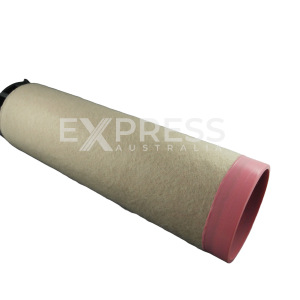By Refrigeration Type Air Dryers
Inlet air is chilled to about 39°F to force it to drop part of its water vapor by condensation. At this temperature it is at saturation or 100% relative humidity. Before being discharged it is heated back up to room temperature and will be at some point below saturation. In subsequent usage, no more water will drop out unless the air is cooled to a temperature less than 39°F.
By Desiccant Dryers
Two identical towers are filled with a desiccant similar to silica gel which will “adsorb” water without combining with it. The water is simply trapped and held. The desiccant can be purged by a flow of dry air at room temperature through it. After a timed interval which may be from 3 to 5 minutes, the towers are switched so the first one can be dried while the second one is in service.
In order to determine what size compressor will meet your requirements, you need to establish how it will be used.
For example: If you will be using it to power air tools, then you need to determine the CFM of each tool. There are many applications for air compressors. If you need help deciding which size is best for you, please contact us and we will be happy to assist you.
Air pressure is determined by the highest minimum pressure requirement.
For example: Some tools consume more air than others. Tools such as pneumatic nail-guns and staplers consume smaller amounts of air, while air grinders and sprayers consume larger amounts. Most tools have a usage rating for CFM consumption at a recommended PSI. This can be found on the tool itself or in the owner’s manual supplied by the tool manufacturer.
The notation CFM (Cubic Feet per Minute) refers to a volume of air produced by the air compressor at a given pressure or PSI (Pound per Square Inch). The right size air compressor will meet your needs in two essential areas: air flow (CFM) and pressure (PSI). It’s important to get a compressor that meets your needs in both areas – otherwise, you risk damage to both your tools and the compressor itself. Always use CFM and PSI specifications from the nameplate on the product.
No, this is not recommended as the compressor unit must not come in direct contact with the elements. The best practice is to either put a lean-to over the unit or install it in a small building. Also when necessary cold weather protection for the oil and other lubricants is recommended.
Install a pressure regulator that can be set for the required air pressure of the tool.
There are a couple of things that could cause this:
1. The compressor may be running to pump the tank up to set the cut-out air pressure rating.
2. The compressor controls may be set for continuous run operation where the compressor will unload but not shut down. Change the switch control for a start-stop operation cycle.
3. The pressure switch may be bad and needs to be replaced, repaired or adjusted.
4. There may be air system leaks that are creating an artificial demand for air and the air compressor is trying to overcome the air pressure loss caused by leaks.
No, this is not up to the approved code for compressed air systems. The PVC is an oil based product and it does not react properly to heat, vibrations and oil vapour that is carried in the air compressor discharge air. The PVC is prone to bursting under the normal air pressure and unit operations. Consult your local building inspector for piping recommendations.
Install an automatic tank drain that is either air actuated, electronically actuated or timed sequence actuated.

 Atlas Copco 1092100500 Compressor Air Filter Equivalent
Atlas Copco 1092100500 Compressor Air Filter Equivalent